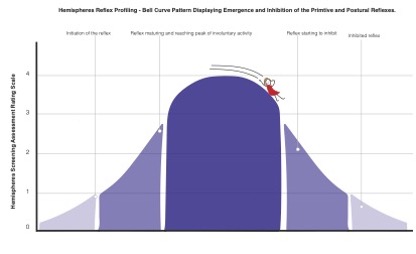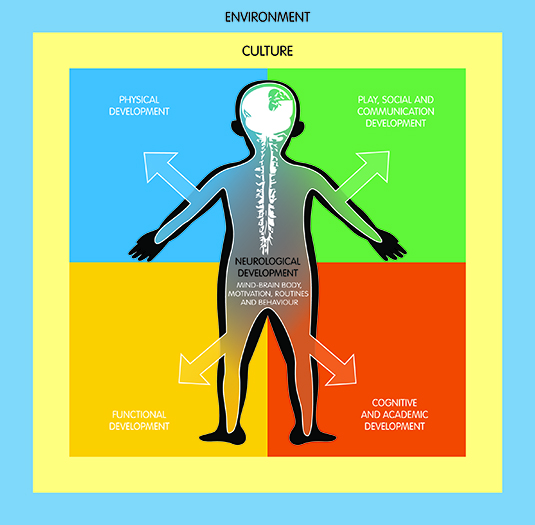Articles
The Pattern of Reflex Development

To understand the role of the reflexes in development it is important to appreciate the smaller detail. Each reflex follows a journey of its own, but this does not occur in isolation from the other reflexes and combined with them, the whole process creates a chain of reflex responses.
When the chain of reflexes successfully waxes and wanes then the child’s development follows a similar journey to a line of dominoes: the first one is pushed, falls and knocks into the next and so on until the whole chain has collapsed.
The neurological chain of reflexes is embedded in typical child development. The medical professions have applied this sequence of emergence and inhibition in the examination of neurological maturity in children. The reflex profile of a child is, therefore, a reliable predictor of the emergence of motor milestones (Capute et al, 1982). Equally, it is a predictor of neurological abnormality (Zafeiriou et al, 1995, Zafeiriou, 2004) and of those children at high risk of neurodevelopmental delay (Forslund, Bjerre, 1983, Capute 1986).
The reflex chain has a recognisable sequence in which the reflexes emerge and inhibit.
The reflexes, similar to the dominoes, are designed to emerge and unfold sequentially, run for a period of time and then begin to integrate. Many of these reflexes will run in parallel with others and will demonstrate a degree of interplay in their shared role in developing voluntary movements. The development of learnt voluntary movements allows the brain and the body to work together and to serve a common purpose. So how does a small child evolve from the involuntary control level to that of voluntary control?
The reflexes follow the typical pattern of a bell curve illustrated in Figure 4. The emergence of a reflex is a strengthening process, where over a given period of time the movement pattern grows in its force and control. It then reaches a peak in its strength and is practised until the movement begins to reach some level of voluntary control. This then triggers the inhibiting pattern, allowing the involuntary movements to begin to reduce in strength. At this stage, maturation is occurring and the cortex or higher neurological centres are overriding and dominating.
You might also be interested in

The Hemispheres Conceptual Model - Underpins our way of working.

Hemispheres Pyramid of Development and Learning

The Primitive and Postural Reflexes as defined by Hemispheres
Copyright © 2026 | Privacy Policy


